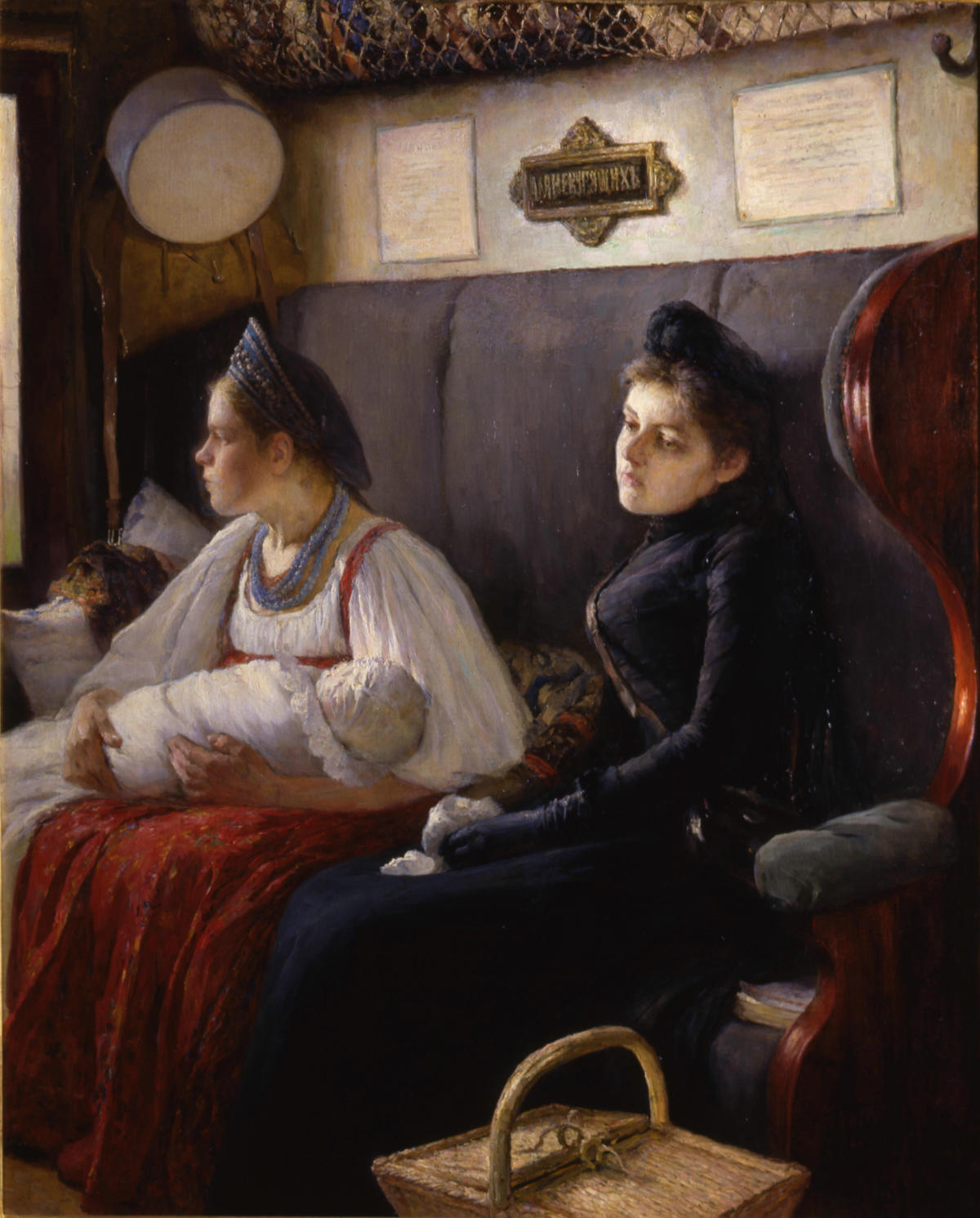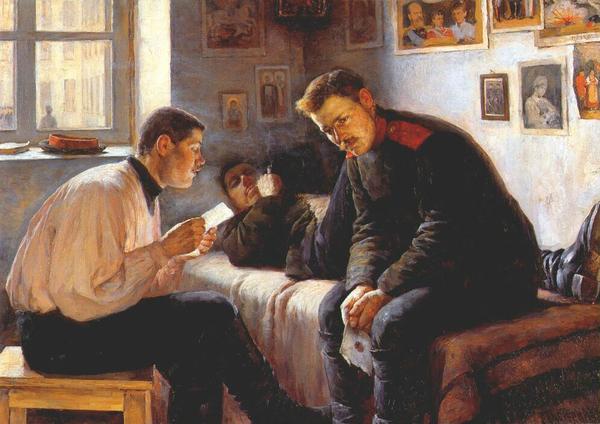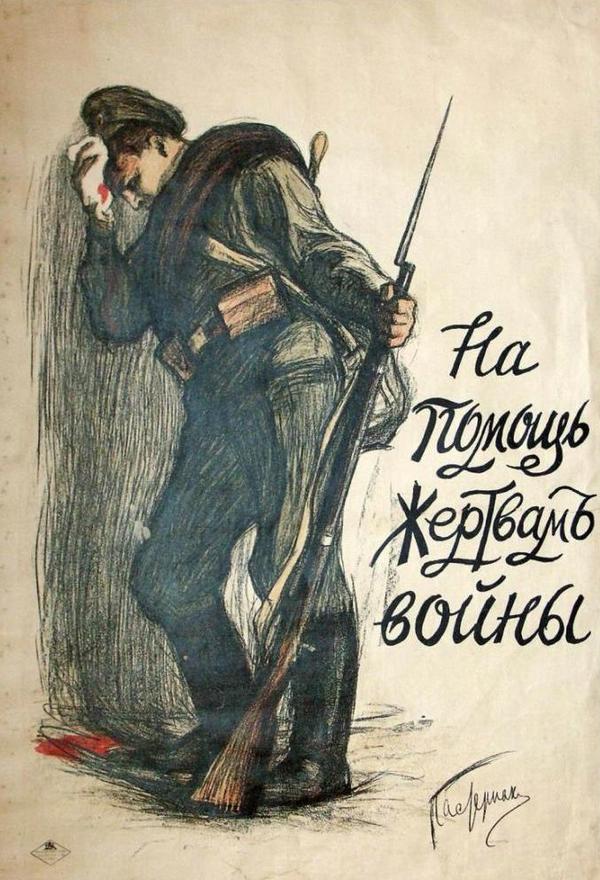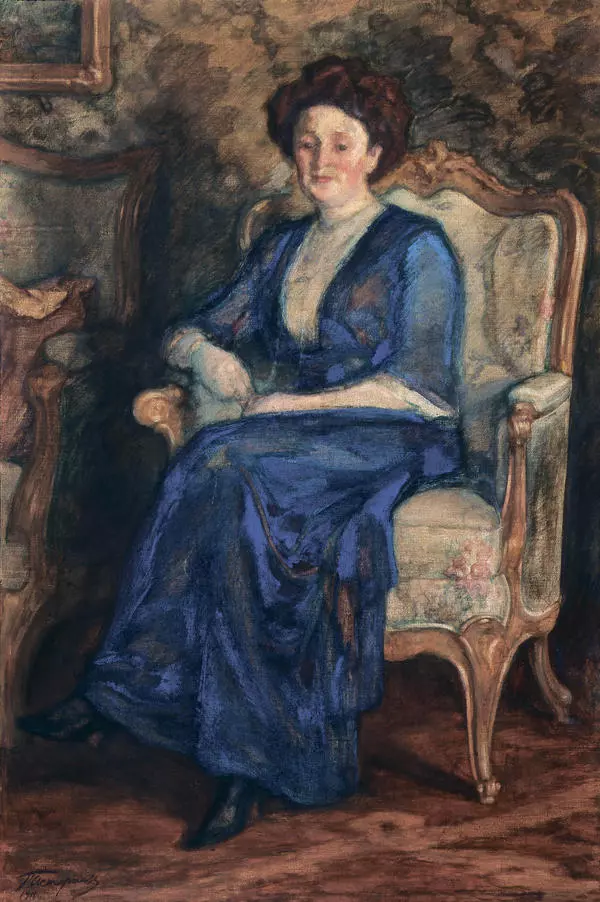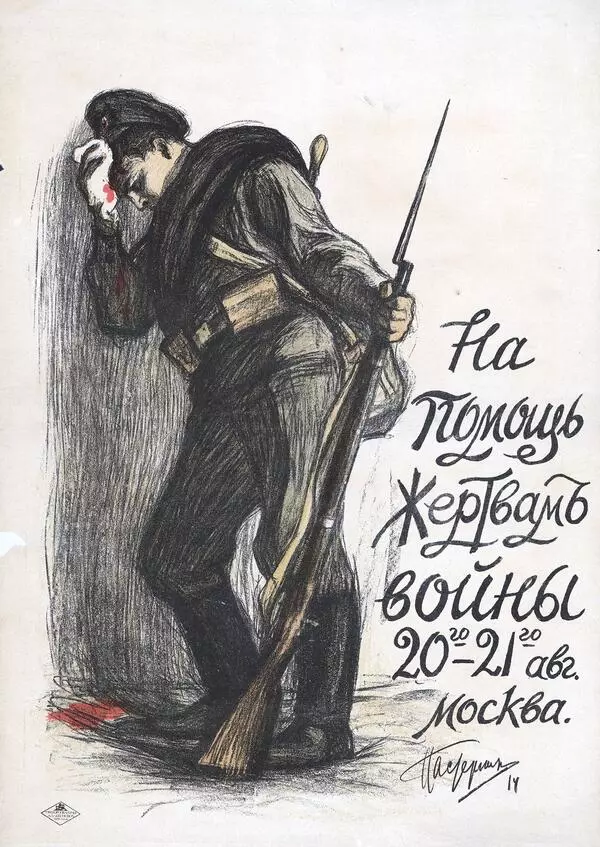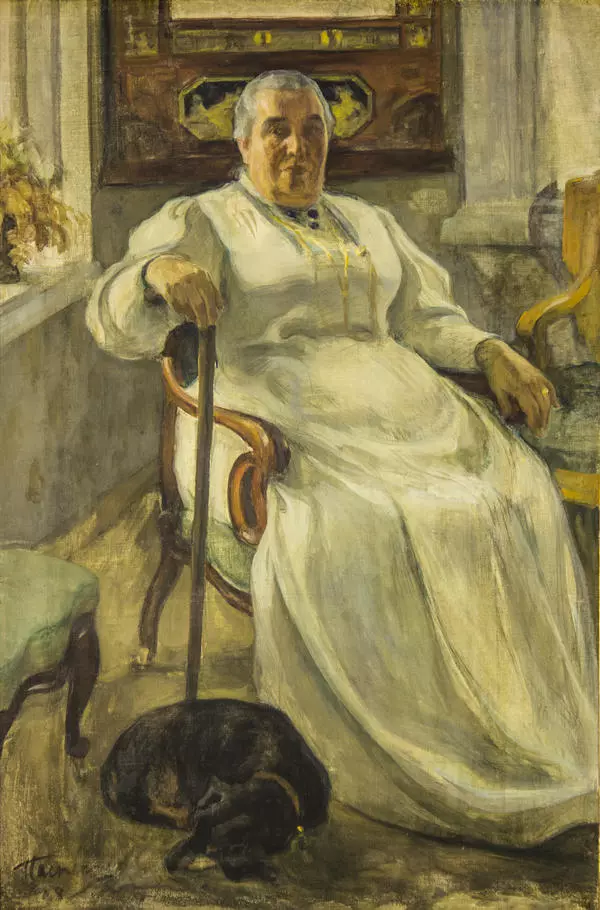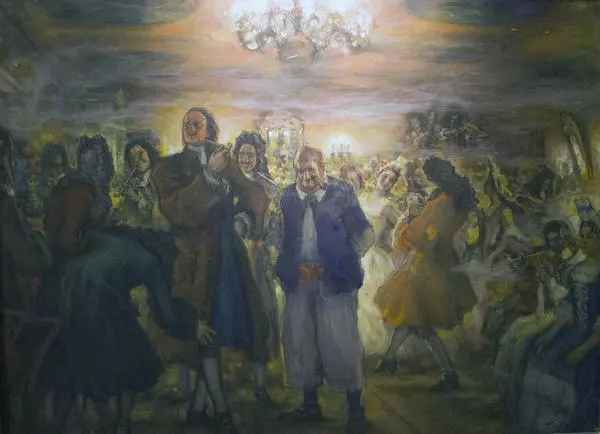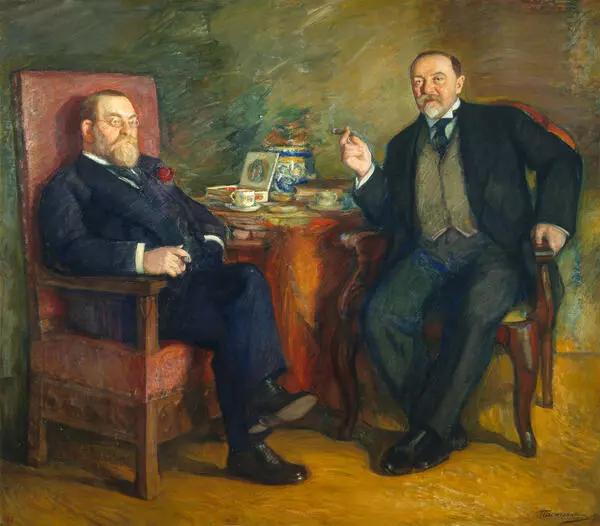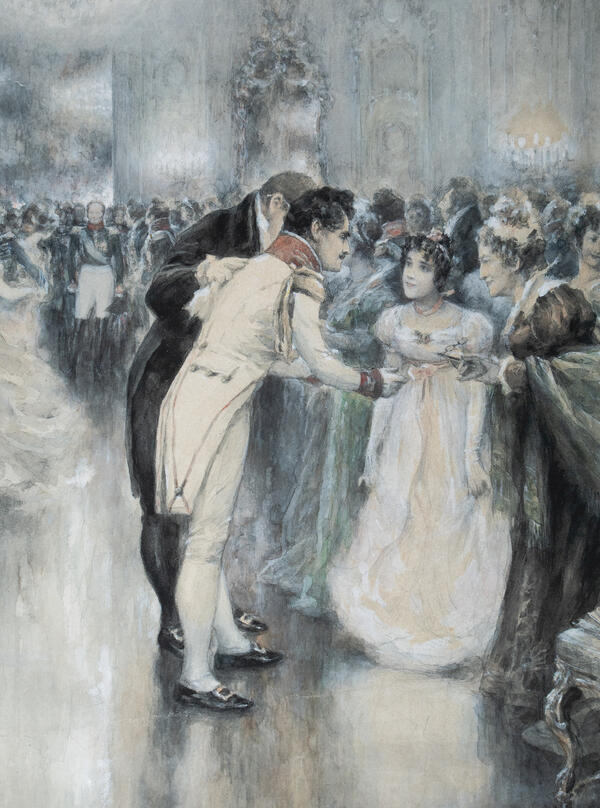Leonid Pasternak, father of the renowned poet Boris Pasternak, was a popular painter. He often produced pictures with ambiguous, enigmatic subjects, which were built from multiple small but important elements.
Going to the Family
Время создания
1891
Размер
143x115,5 cm
143 × 115.5 cm
143 × 115.5 cm
Техника
Oil on canvas
Коллекция
31
Открыть в приложении#11

Leonid Pasternak
Going to the Family
#21
One of those works is the displayed canvas, Going to the Family. It covers the theme of family and maternity, an essential motif in Pasternak’s creative oeuvre.
#2
The main character of the picture is a young woman clad in a tight buttoned-up mourning dress, squeezing a handkerchief. Beside her sits a girl in a pinafore frock with a floral print. She is probably the wet-nurse of the first woman’s child that she is holding in her arms. They are traveling by train, in a first-class carriage; this detail is seen from the soft seat with a dark upholstery. It can be concluded that the central character of the painting was a well-off person.
#10
Analysis of these details supports the assumption that the woman depicted in the painting is a young widow who goes ‘to the family’ after her husband’s death.
#3
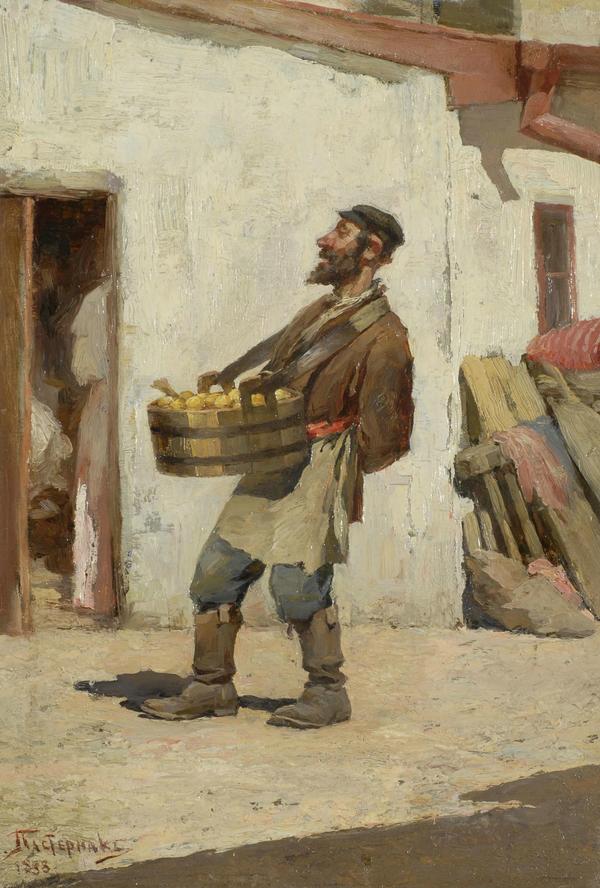
Leonid Pasternak, Peddler. 1888. Collection of the State Vladimir-Suzdal Museum Reserve
#12
Leonid Pasternak, father of the renowned poet Boris Pasternak, was a popular painter. He often produced pictures with ambiguous, enigmatic subjects, which were built from multiple small but important elements.
#22
One of those works is the displayed canvas Going to the Family. It covers the theme of family and maternity, an essential motif in Pasternak’s creative oeuvre.
#23
The main character of the picture is a young woman clad in a tight buttoned-up mourning dress, squeezing a handkerchief. Beside her sits a girl in a pinafore frock with a floral print. She is probably the wet-nurse of the first woman’s child that she is holding is her arms. They are traveling by train, in a first-class carriage; this detail is seen from the soft seat with a dark upholster. It can be concluded that the central character of the painting was a well-off person.
Leonid Pasternak. News from the homeland (Letter from home). 1889. The State Tretyakov Gallery.
#13
Analysis of these details supports the assumption that the woman depicted in the painting is a young widow who goes “to the family” after her husband’s death.
Leonid Pasternak was born to a large Odessa family that had five more children. From his early age, he was fond of drawing, but before he became a professional artist, he enrolled into the School of Medicine of Moscow University. From there, he transferred to the Law School of Novorossiysk University, which he graduated in 1885.
Leonid Pasternak was born to a large Odessa family that had five more children. From his early age, he was fond of drawing, but before he became a professional artist, he enrolled into the School of Medicine of Moscow University. From there, he transferred to the Law School of Novorossiysk University, which he graduated in 1885.
#24
Leonid Pasternak. A Poster. Help War Victims. 1914–1917. Collection of the State Vladimir-Suzdal Museum Reserve
Pasternak studied art at the studio of Yevgraf Sorokin, and from the mid-1880s, at the в Academy of Fine Arts, Munich.
After Pavel Tretyakov bought his painting A Letter from Home[1] for his collection, Pasternak moved to Moscow, where he married the pianist Rosalia Kaufman. The painter took part in annual art shows of the Society for Travelling Art Exhibitions, was a teacher at the Anatoly Gunst College of Fine Arts and at the Moscow School of Painting, Sculpture and Architecture.
After Pavel Tretyakov bought his painting A Letter from Home[1] for his collection, Pasternak moved to Moscow, where he married the pianist Rosalia Kaufman. The painter took part in annual art shows of the Society for Travelling Art Exhibitions, was a teacher at the Anatoly Gunst College of Fine Arts and at the Moscow School of Painting, Sculpture and Architecture.
#19
One of the best-known works by Pasternak was a World War I poster called Help War Victims. The artist wrote: ‘I could never imagine the success that this poster had when it was pasted all over Moscow on the day of the fund-raising campaign. Crowds were standing before it, women were crying…’
In 1921, the artist with his wife and daughters were allowed to leave for Berlin where he was to have an eye surgery. The family never came back to the Soviet Union. When the Nazi regime became tougher, the Pasternaks moved to Great Britain and settled in Oxford where the painter spent his last years. At present, a memorial museum works at the Oxford house where Pasternak used to reside.
#25
читать дальшескрыть
00:00
00:00
1x
Going to the Family
Время создания
1891
Размер
143x115,5 cm
143 × 115.5 cm
143 × 115.5 cm
Техника
Oil on canvas
Коллекция
31
Открыть в приложении
Поделиться
